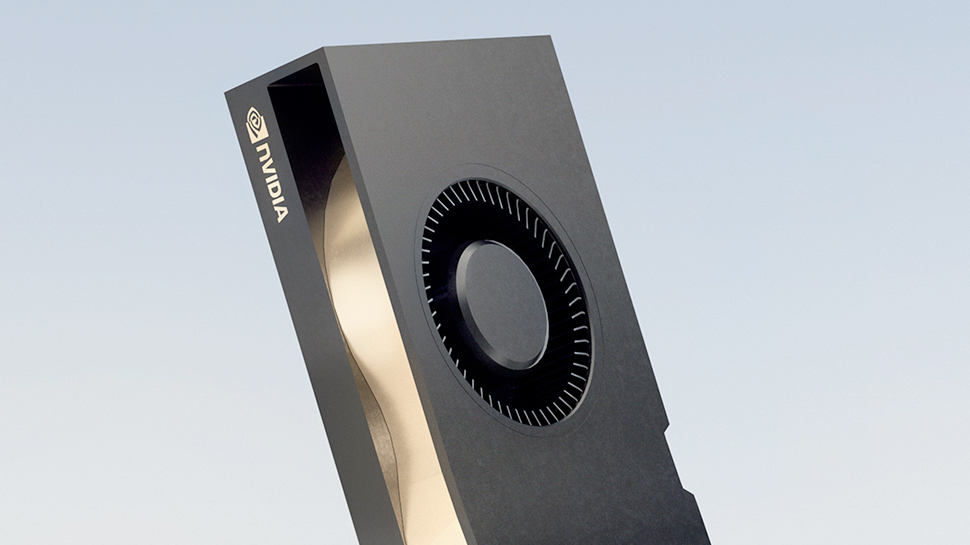Nvidia this week introduced a host of professional graphics solutions for desktops and laptops, which carry the Nvidia RTX A-series monikers and do not use the Quadro branding. The majority of the new units are based on the Ampere architecture and therefore bring the latest features along with drivers certified by developers of professional software.
Nvidia’s Desktop ProViz Lineup Gets RTX A5000 and RTX A4000 Cards
Nvidia started to roll-out its Ampere architecture to the professional market last October when it announced the Nvidia RTX A6000 graphics card based on the GA102 GPU with 10,752 CUDA cores and 48GB of memory. The graphics board costs $4,650 and is naturally aimed at high-end workstations that cost well over $10,000. To address market segments with different needs, Nvidia this week introduced its RTX A5000 and RTX A4000 professional graphics cards.
The Nvidia RTX A5000 sits below the RTX A6000 but has the exact same feature set, including support for 2-way multi-GPU configurations using NVLink as well as GPU virtualization, so it can be installed into a server and used remotely by several clients (or used in regular desktop machines). The RTX A5000 is based the GA102 GPU and is equipped with 24GB of GDDR6 memory with ECC. The RTX A5000 peaks at 27.8 FP32 TFLOPS, which is nearly 30% below RTX A6000’s 38.7 FP32 TFLOPS, so it likely has far fewer CUDA cores. The board has four DisplayPort 1.4a outputs and comes with a dual-slot blower-type cooler.
Next up is the Nvidia RTX A4000, which is based on the GA104 and carries 16GB of GDDR6 memory with ECC. The product tops at 19.2 FP32 TFLOPS and is designed solely for good-old ‘individual’ workstations. Meanwhile, to keep up with the latest trends towards miniaturization, the RTX A4000 uses a single-slot blower-type cooling system.
Nvidia plans to start shipments of the new RTX A-series professional graphics cards later this month, so expect them in new workstations in May or June.
Mobile Workstations Get Amperes and Some Turings
In addition to new graphics cards for desktop workstation, Nvidia also rolled-out a lineup of mobile Nvidia RTX A-series GPUs that includes four solutions: the RTX A5000 and the RTX A4000 based on the GA104 silicon (just like the RTX 3070/RTX 3080 for laptops), as well as the RTX A2000 based on the GA106 chip (like the RTX 3060 for laptops).
The higher-end mobile Nvidia RTX A5000 has 6,144 CUDA cores and 16GB GDDR6, and the RTX A4000 has 5,120 CUDA cores and 8 GB GDDR6. These are essentially the mobile GeForce RTX 3080/3070, but with drivers certified by ISVs for professional applications. Performance of these GPUs tops at 21.7 FP32 and 17.8 FP 32 TFLOPS.
By contrast, the RTX A3000 with 4,096 CUDA cores and 6GB of memory seems to be a rather unique solution as it has more execution units than the GeForce RTX 3060, yet it features a similar 192-bit memory interface. As for performance, it will be up to 12.8 FP32 TFLOPS. Meanwhile, the entry-level RTX A2000 with 2,560 CUDA cores and 4GB of GDDR6 memory will offer up to 9.3 FP32 TFLOPS.
All of these GPUs are rated for a wide TGP range (e.g., the RTX A5000 can be limited to 80W or to 165W) and support Max-Q, Dynamic Boost, and WhisperMode technologies, so expect actual performance of Nvidia’s RTX A-series GPUs to vary from design to design, just like it happens with their GeForce RTX counterparts.
Nvidia expects its partners among manufacturers of mobile workstations to adopt its new RTX A-series solutions this quarter.
Some New Turings Too
In addition to new Ampere-based professional graphics solutions for desktops and laptops, Nvidia also introduced its T1200 and T600 laptop GPUs that also come with drivers certified by developers of professional applications. These products use unknown Turing silicon and are mostly designed to replace integrated graphics, so they do not feature very high performance and lack RT as well as Tensor cores.
